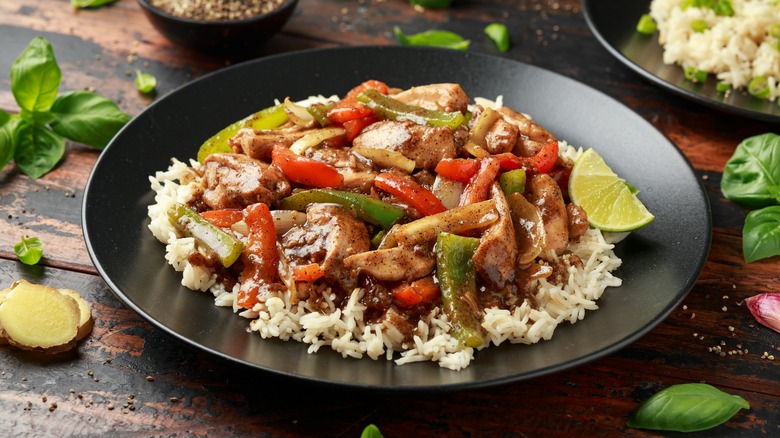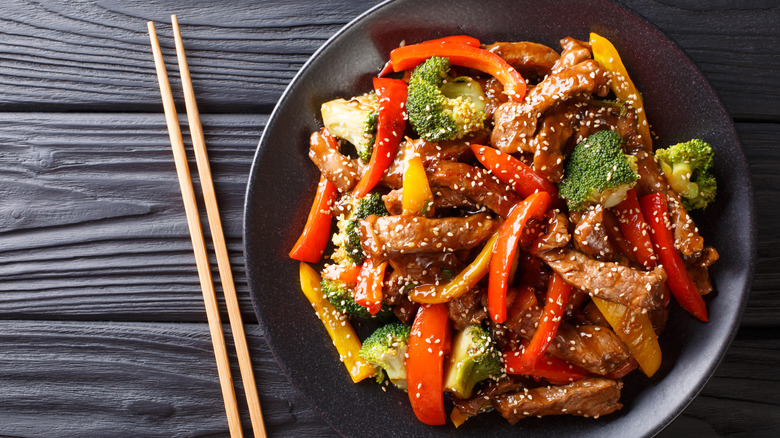The Ideal Amount Of Ingredients To Include In A Stir-Fry
Making a stir-fry should be a feast for the senses, just like eating one is. From the sound of the meat sizzling in a super-hot wok to the sight of the colorful peppers caramelizing to the smell of the garlic as it cooks — creating a stir-fry is short on neither flavor, color, nor texture.
In its most basic form, a stir-fry can be a variety of vegetables or vegetables combined with a protein such as chicken or steak. And it doesn't have to be anything fancy. In fact, a stir-fry can just be odds and ends you already have in your refrigerator. Or, you can follow a recipe and use different sauces and try new vegetable combinations. The options are nearly limitless when you consider that you can use white or fried rice as the stir-fry's foundation or any variety of noodles, from mei fun to udon.
However, as tempting as it is to load up the wok with a large variety of proteins and vegetables, a crowded wok can lead to stewing your ingredients rather than frying them from all of the moistur they release. As hard as it can be to do, limiting the number of ingredients in your stir-fry will make for a better-tasting dish, as well as one with more texture. But what is the right number of ingredients?
Focus on flavor and texture
While a stir-fry is a perfect way to use up odds and ends in your fridge, discretion is still important in deciding what to use and what to pass on. The ideal number of ingredients in a stir-fry should be between three to five in order for the flavors to complement each other and not allow the characteristic sear to suffer. Overloading the dish also doesn't allow the individual ingredients to shine, both in terms of flavor and texture. Of the total ingredients, if you include a protein, a maximum of three of them should be vegetables.
While it's perfectly acceptable to use either fresh or frozen vegetables for a stir-fry, it's important for them to be about the same size for uniform cooking. The stir-fry ingredients should also offer different textures from soft to crunchy. Examples of soft ingredients would be noodles or tofu, while crunchy is often found in the vegetables, such as carrots or water chestnuts. An umami flavor component is also important and can be incorporated with the addition of mushrooms or meat. And don't forget the finishing touch of a hot sauce, peanuts, or herbs to add another harmonious flavor component. In the end, when making the perfect stir-fry, keep all your senses in mind.

